This article was scraped from Rochester Subway. This is a blog about Rochester history and urbanism has not been published since 2017. The current owners are now publishing link spam which made me want to preserve this history.. The original article was published November 19, 2012 and can be found here.
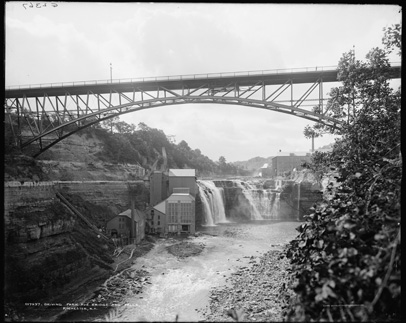
Last week we explored some of the caves in Rochester's Genesee River gorge. While digging around for information about Lower Falls, I came across some great stuff on the nearby Driving Park Bridge. The bridge that you know today was built in 1989. But the previous bridge (shown above) had been there for nearly 100 years. That's pretty remarkable when you consider its length of 717 feet, the icy Rochester weather, and the relentless spray from the Lower Falls below. Be sure to click on the image above for a much larger view. And check out the link at the end of this article to watch the explosive demolition of the old steel bridge in the 1980's...
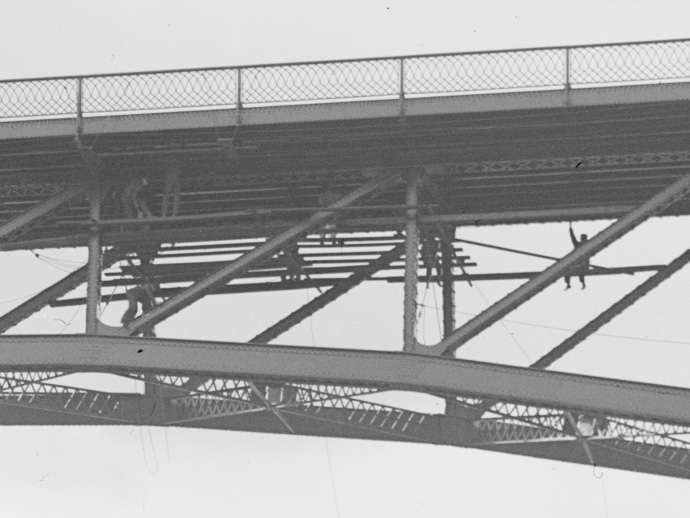
The following excerpt is from a Historic Written Description by the Deptartment of the Interior, 1983: The chief engineer of the Driving Park Avenue Bridge was Lefferts L. Buck. He was born in 1837 and died in 1909. Buck received a degree in civil engineering from Rensselaer Polytechnic Institute in 1868. His primary engineering emphasis was on the design and construction of bridges, and he is known as one of the great bridge-builders of his time. Buck's greatest achievement in engineering was the Williamsburg Bridge in New York, significant for the length of its span. He also built the Niagara Falls Bridge in 1895-1898, whose span of 840 feet made it the longest bridge of its kind in the nineteenth century. Buck's construction and observation of the Driving Park Avenue Bridge, previous to the construction of the Niagara Falls Bridge, allowed him to modify and improve on the hinged arched truss system.
I love all the little details in this 1904 photograph. Like the workers hanging out beneath the road deck (shown above). And the mess of power lines winding their way up the gorge walls from the hydroelectric plant (shown below).
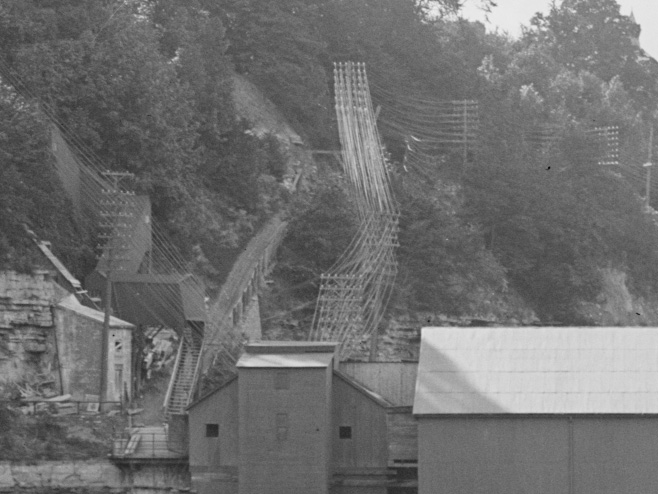
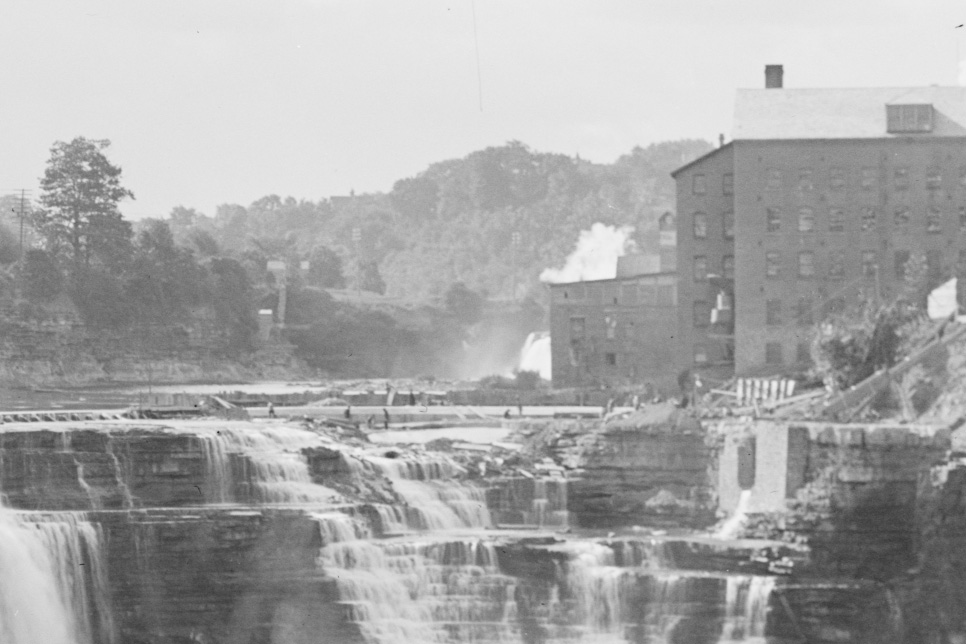
This was a busy busy time in Rochester. These workers on the rim of Lower Falls are constructing a dam, several feet high to regulate the flow for the electric generators.
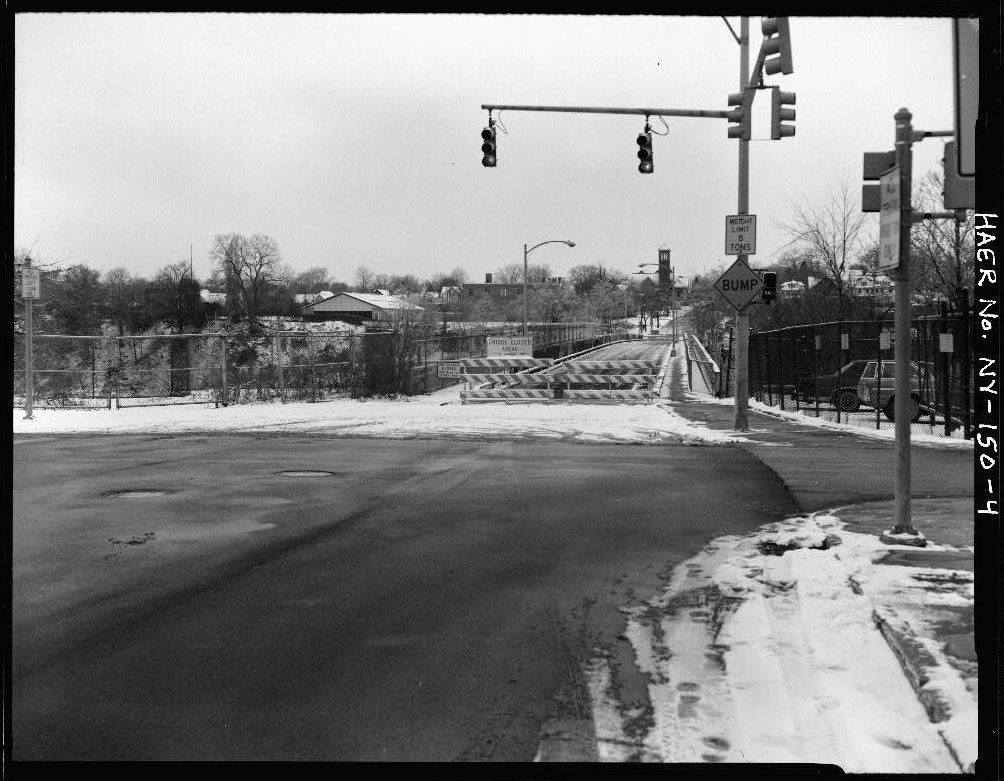
Look at how narrow this bridge was. The photo above is looking west towards Driving Park Bridge approach (Avenue E). The road deck was just 20 feet wide with two 7.5 foot wide cantilevered sidewalks on either side.
Although the Driving Park Avenue Bridge was trouble-free for the first 48 years after its construction, it was closed in 1938 to replace the deck. It was closed for repaired again in 1952, 1959 and 1965 and had closed more frequently for repairs in its last twenty years, until finally, it was demolished in the 1980's
![A still frame from video of the Driving Park Bridge demolition. [VIDEO STILL: Getty Images]](https://senseofplace.dev/content/images/photos/rochester-driving-park-bridge-demolition.jpg)
And now, as promised, watch this incredible piece of engineering get blown up

and come crashing into the Genesee River, 212 feet below.


